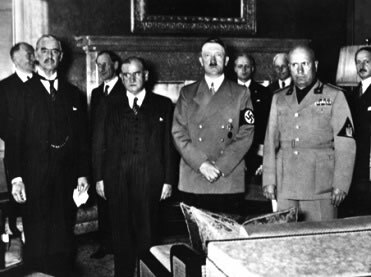In July 1943 an important fact made headlines that closely followed the unfolding of World War II. That month, Benito Mussolini, top leader of the Italian Fascist State, had been deposed by the monarch Vittorio Emanuele III and imprisoned in the Gran Sasso region. The news sounded like a great victory for the Allied countries and consequently placed the plans of Adolf Hitler and the Axis Countries at the mercy of imminent failure.
The situation that already seemed at all favorable only got worse when the new Italian Prime Minister, Pietro Badoglio, decided to sign an armistice that prepared the Italian surrender. In such an unfavorable context, Hitler organized a group of operations that would have the difficult mission of locating and freeing Benito Mussolini. Such action was aimed at bringing Italian troops back into combat through the return of the charismatic fascist leader.
Kurt Student and Otto Skorzeny, two German secret agents, were sent to Italy to obtain Mussolini's location. In the meantime, they discovered that the duce's political opponents were trying to nullify a return of the fascist leader by keeping him imprisoned in different places for a short season. While plausible, this tactic did not stop the two agents from discovering the different prisons Mussolini had passed through.
After being removed from the city of Rome, the precious prison had been transferred to the island of Ponza, to the naval base of La Spezia in a small village in Sardinia. In this last whereabouts, Student and Skorzeny learned that Benito Mussolini would once again be transferred, this time to the Campo Imperatore hotel, located in the Grans Sasso region. It was then that the two agents decided to articulate the pretentious rescue with the use of glider planes and a group of paratroopers.
This type of air transport was widely used by the Germans, who dominated its use since the time when the Treaty of Versailles prohibited the country from having a large air force. Despite being agile and precise, these planes did not have great agility and, therefore, ended up vulnerable to any type of anti-aircraft battery. This fact increased the risks of the operation, which had a forecast of losses of up to seventy percent.
On September 12, 1943, twelve DFS 230 gliders sailed from the outskirts of Rome to Grans Sasso. At the same time, a detachment of 300 soldiers was used to control the cable car that provided access to the hotel and isolate access to the area. When they invaded the place, the Germans would have to face the soles coordinated by General-Inspector Giuseppe Gueli. However, the military leader offered no resistance and failed to carry out the immediate execution order if Mussolini was rescued.
After being freed by the Germans, Mussolini met Adolf Hitler in Munich to thank him for his successful action. A few days later, Mussolini went to northern Italy and settled in the village of Gargano under the protection of the SS military. On September 23 of that same year, the duce announced a parallel state in the Italian Peninsula with the proclamation of the Italian Social Republic.
The attempt to regain power was not consolidated for a long time. In 1945, the final year of the war, Allied troops managed to control the entire Italian territory. A group of Italian Communists arrested Mussolini and his lover, Carla Petacci. On April 28, 1945, both were executed and had their bodies publicly displayed in a Milan city square.
Do not stop now... There's more after the advertising ;)
By Rainer Sousa
Graduated in History
Brazil School Team
20th century - wars - Brazil School
Would you like to reference this text in a school or academic work? Look:
SOUSA, Rainer Gonçalves. "The Rescue of Mussolini"; Brazil School. Available in: https://brasilescola.uol.com.br/guerras/o-resgate-mussolini.htm. Accessed on June 27, 2021.

